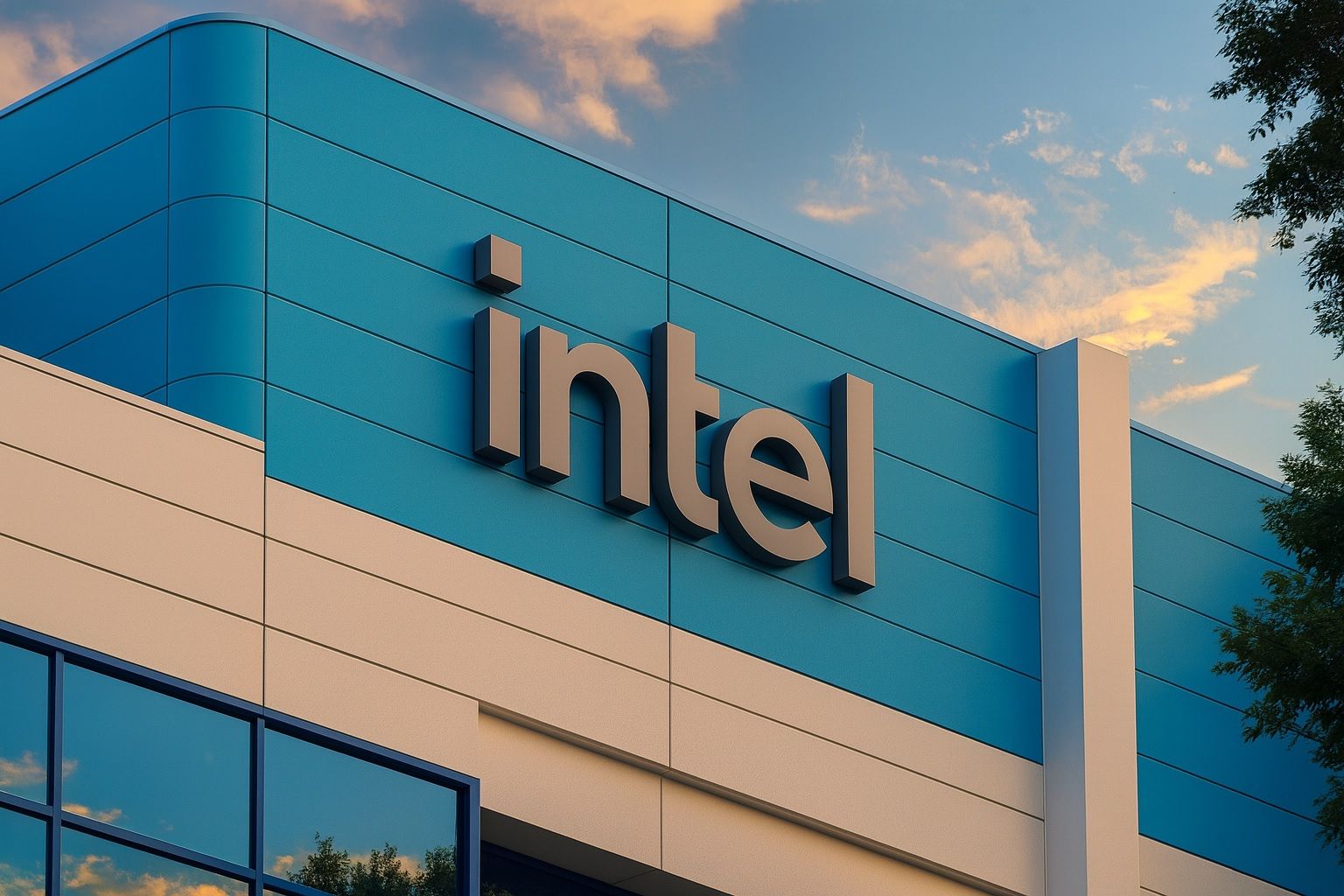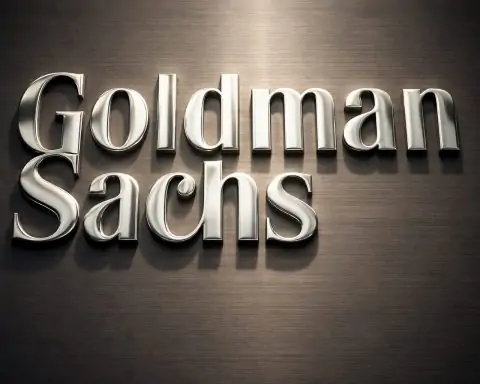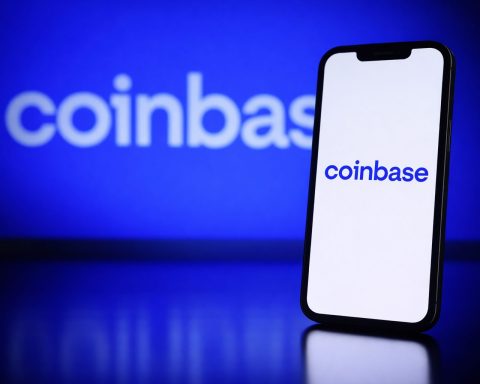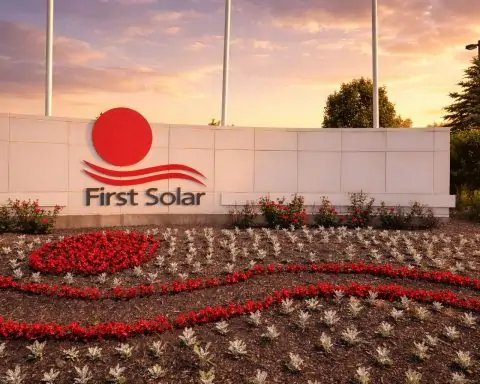- Strong Q3 results: Intel’s Q3 revenue was $13.7 billion, up 3% year-on-year, with GAAP net income of $4.1 billion (vs. a $16.6 billion loss a year ago) [1]. Adjusted EPS was $0.23 (versus a small loss expected).
- Management upbeat: CEO Lip-Bu Tan said results show “steady progress” and that “AI is accelerating demand” across Intel’s chips [2]. CFO Dave Zinsner noted Intel strengthened its balance sheet via new funding (U.S. government, NVIDIA, SoftBank) and that chip demand now “outpaces supply” [3].
- Stock jumps: Intel shares jumped ~8% in after-hours trading on the news [4], trading in the mid-$30s (around $37–38) – just shy of a two-year high (~$39.65) [5]. The stock is up roughly 85–90% in 2025, far outperforming rivals, thanks to optimism about its turnaround [6] [7].
- Big backers: The rally has been fueled by blockbuster deals: the U.S. government took a ~9.9% equity stake (about $8.9 billion) via unused CHIPS Act grants, and NVIDIA and SoftBank invested $5 billion and $2 billion respectively in Intel [8]. These partnerships (and rumors of more, e.g. foundry deals) have given Intel a vital cash lifeline.
- Guidance: Intel now expects Q4 2025 revenue of $12.8–13.8 billion (midpoint ~$13.3B) and ~$0.08 EPS (non-GAAP) [9] [10], roughly in line with analyst projections.
- Analyst caution: Many analysts still sound skeptical. The average 1-year price target is only about $29 [11] (well below today’s price), and most brokerages rate INTC as a “Hold” or worse [12] [13]. Bank of America recently cut Intel to “Underperform”, warning the shares have run “too far, too fast” relative to earnings [14]. In fact, options markets imply a large ±10% swing around the earnings release [15].
- Industry outlook: The broader semiconductor market is very strong on booming AI demand. Global chip sales are forecast to hit a record ~$697 billion in 2025 [16]. Meanwhile, tech peers are surging: AMD stock recently hit an all-time high (~$240) and is up ~80% this year, and NVIDIA dominates the AI chip market with roughly a $1 trillion market cap [17]. Intel’s market value (~$175 billion) is only about half of AMD’s and a fraction of NVIDIA’s [18], highlighting how much ground it still needs to make up.
Intel’s October 23 earnings report delivered a better-than-expected quarter, sparking relief among investors. The company beat Wall Street’s forecasts, with Q3 revenue of $13.7 billion and adjusted earnings of $0.23/share (versus a consensus around breakeven) [19] [20]. Importantly, Intel swung to net profit (GAAP net income $4.1B) after a huge loss last year. CEO Lip-Bu Tan hailed the results as evidence of a turnaround: he said Intel was making “steady progress” and that “AI is accelerating demand for compute” across its CPU, ASIC and foundry business [21]. Likewise, CFO Dave Zinsner noted that Intel had taken “meaningful steps…to strengthen our balance sheet,” citing the infusion of cash from the U.S. government, NVIDIA and SoftBank [22]. Zinsner added that Intel is now running into supply constraints – demand is outpacing supply for its processors – a “high-class problem” he expects to continue into 2026 [23]. In short, management painted a picture of a company finally leveraging the AI boom to boost its core business.
The market cheered the numbers. In after-hours trading on Oct. 23, Intel’s stock surged roughly 8% on the news [24]. This vaulted INTC to about $37–$38 per share – not far below its 52-week peak of $39.65 [25]. As of late October, Intel stock was trading at its highest levels in roughly two years. In fact, Intel is up about 85–90% year-to-date, making it one of 2025’s strongest performers in big tech [26] [27]. The rally has been led by retail and institutional buyers, buoyed by the major funding news. As one analyst noted, Intel shares “popped after-hours” on the combination of better-than-feared guidance, cost/cashflow improvements and “AI-PC buzz,” plus $15 billion of fresh strategic funding from the US and its partners [28]. In other words, investors are betting this string of deals is starting to pay off.
Indeed, unprecedented investments have reshaped the picture for Intel. In August, the U.S. government converted almost $9 billion in CHIPS Act subsidies into a roughly 9.9% equity stake in Intel [29] – an extraordinary lifeline aimed at shoring up U.S. chipmaking. Days later, NVIDIA agreed to invest $5 billion for a ~4% stake and to collaborate on next-gen PC and data-center chips [30]. SoftBank’s Vision Fund also put in $2 billion for an Intel stake [31]. These deals have infused Intel with cash and credibility. (There are even unconfirmed reports that Microsoft’s Azure cloud unit may place large chip orders with Intel, or that Intel’s fabs could produce chips for rivals like AMD.) Whatever the details, the net effect is that Intel now has a war chest of roughly $15 billion in new funding, which investors hope can accelerate its comeback [32].
Looking ahead, Intel’s guidance for Q4 is for roughly $12.8–13.8 billion in revenue (midpoint ~$13.3B) and about $0.08 EPS (non-GAAP) [33] [34]. That outlook is generally in line with analyst expectations. CEO Tan emphasized that underlying demand – especially the AI-driven refresh cycle in PCs and data centers – remains strong. He noted that Intel is shipping its new “Panther Lake” PC processors and that its foundry arm (making chips for others) could benefit if customers like Apple or AMD decide to come on board [35] [36]. In essence, Intel expects the AI infrastructure boom to continue fueling demand for its x86 CPUs, accelerators and manufacturing services.
However, most analysts urge caution. Many contend Intel’s recent stock run has outpaced its actual earnings. The average 12-month price target among analysts is only about $29 [37] – far below Intel’s current price. Bank of America, for example, just downgraded INTC to “Underperform,” warning the shares have run “too far, too fast” relative to fundamentals [38]. According to a recent analysis, the consensus on Wall Street is mixed: most firms rate Intel as a Hold (or worse), with only a handful of Buy recommendations [39]. Options traders are also braced for volatility: they’ve priced in roughly a ±10% move for Intel’s stock around the earnings release [40], indicating significant uncertainty.
Adding to the skepticism is Intel’s competitive position. While Intel has gained momentum, its rivals have surged even more on the AI wave. AMD recently hit record highs (stock ~$240) after winning big AI chip contracts, climbing about 80% in 2025 [41]. NVIDIA, by contrast, commands around 90% of the data-center AI processor market and briefly reached a $1 trillion market capitalization in 2025 [42]. Intel’s market value (~$175 billion) is only about half of AMD’s and a fraction of NVIDIA’s [43]. In other words, Intel is still behind in AI chips and has work to do to regain its former dominance in PCs and servers. As one market commentator put it, Intel’s stock “has a history of popping on optimistic news only to cool off,” so this week’s rally will need solid follow-through to be validated [44].
On the positive side, the broader semiconductor industry is on a tear. Analysts project record chip sales in 2025 as companies pour money into AI data centers, edge AI, 5G networks and more [45]. If that bullish outlook plays out, Intel’s large installed base of CPUs and its new AI accelerators could find ample market opportunity. The key question is whether Intel can turn this momentum into sustained financial improvement. For now, the market is betting on a turnaround: Intel’s stock sits near multi-year highs amid the excitement. But many experts will be watching the coming quarters closely – they want to see if revenue and profits keep growing before proclaiming a full comeback.
Sources: Intel’s official earnings release [46] [47]; Reuters (Oct. 22 & 23, 2025) [48] [49]; Yahoo/Investopedia market reports [50] [51]; financial data from TradingView [52]; analysis from TechStock² (ts2.tech) [53] [54] [55] and other market news.
References
1. www.intc.com, 2. www.intc.com, 3. www.intc.com, 4. www.reuters.com, 5. ts2.tech, 6. www.reuters.com, 7. ts2.tech, 8. ts2.tech, 9. www.intc.com, 10. www.reuters.com, 11. www.tradingview.com, 12. ts2.tech, 13. ts2.tech, 14. ts2.tech, 15. ts2.tech, 16. ts2.tech, 17. ts2.tech, 18. ts2.tech, 19. www.intc.com, 20. www.investopedia.com, 21. www.intc.com, 22. www.intc.com, 23. www.intc.com, 24. www.reuters.com, 25. ts2.tech, 26. www.reuters.com, 27. www.investopedia.com, 28. www.reuters.com, 29. ts2.tech, 30. ts2.tech, 31. ts2.tech, 32. www.reuters.com, 33. www.intc.com, 34. www.reuters.com, 35. www.reuters.com, 36. www.reuters.com, 37. www.tradingview.com, 38. ts2.tech, 39. ts2.tech, 40. ts2.tech, 41. ts2.tech, 42. ts2.tech, 43. ts2.tech, 44. ts2.tech, 45. ts2.tech, 46. www.intc.com, 47. www.intc.com, 48. www.reuters.com, 49. www.reuters.com, 50. www.investopedia.com, 51. www.investopedia.com, 52. www.tradingview.com, 53. ts2.tech, 54. ts2.tech, 55. ts2.tech







